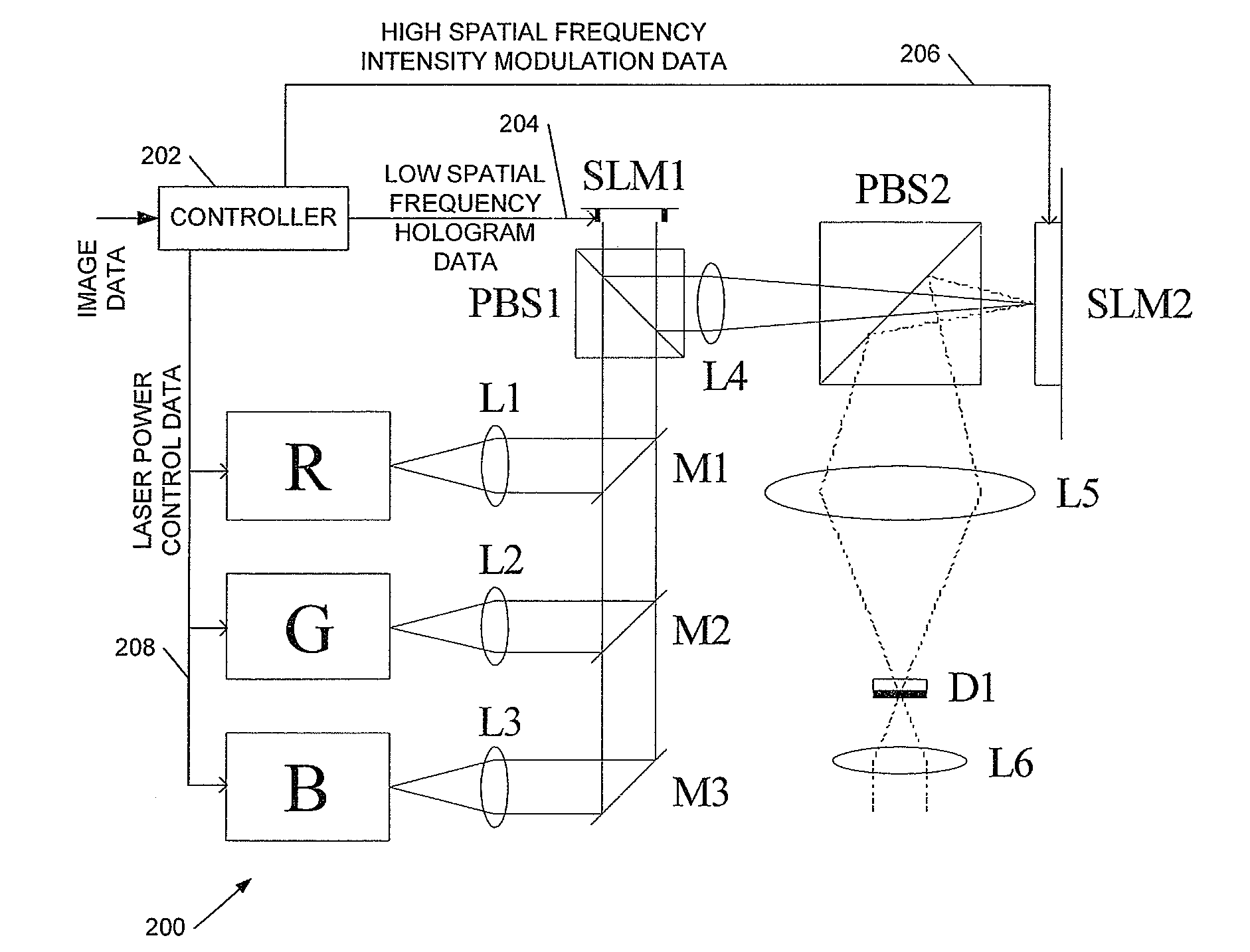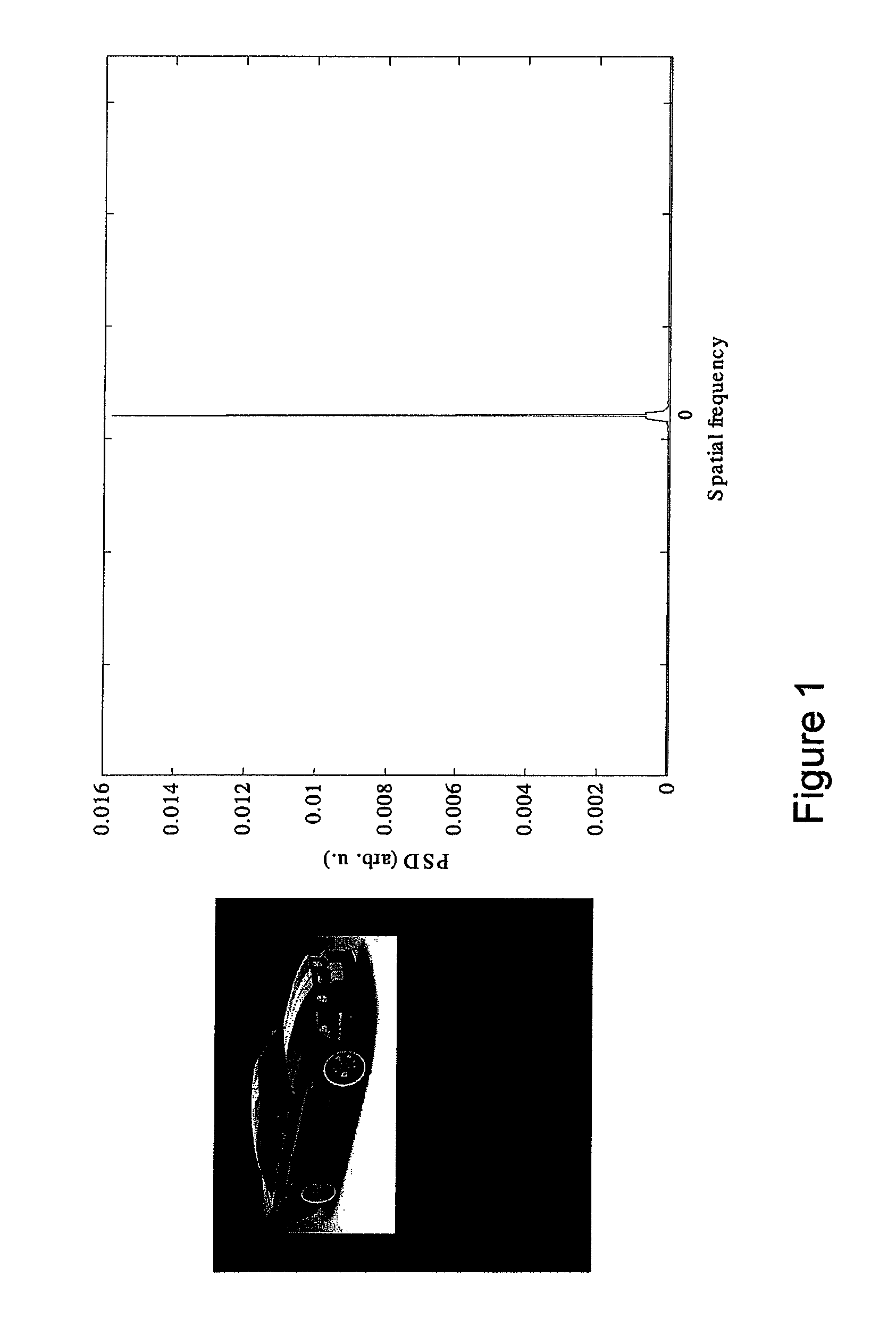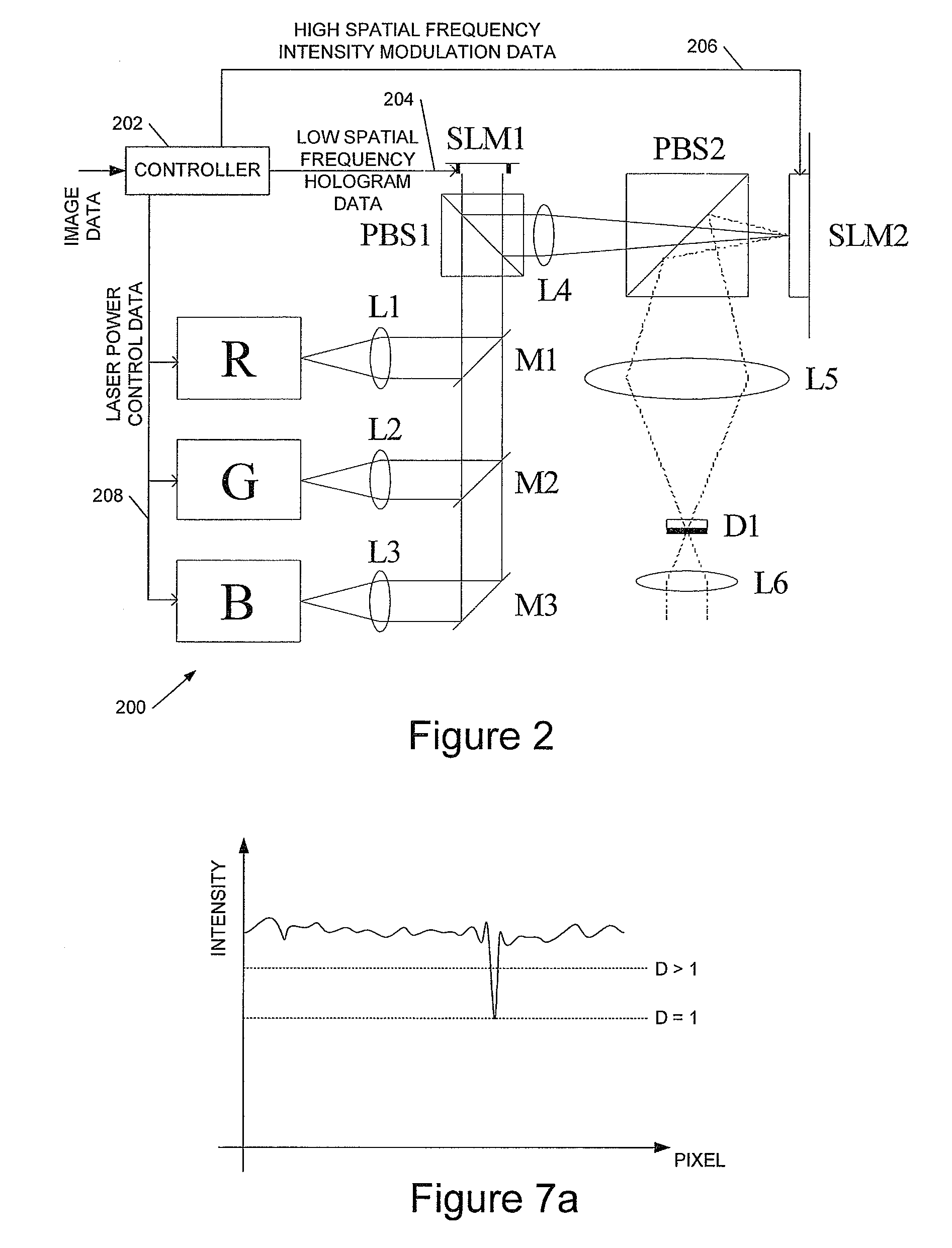Holographic image display system
a display system and holographic technology, applied in the field of holographic image display systems, can solve the problems of increasing cost, making miniaturisation difficult, increasing cost, etc., and achieve the effect of increasing the optical (diffraction) efficiency of the system
- Summary
- Abstract
- Description
- Claims
- Application Information
AI Technical Summary
Benefits of technology
Problems solved by technology
Method used
Image
Examples
example procedure
[0156
[0157]We now describe an example procedure to implement embodiments of the invention. This example procedure is based on super-resolution ADOSPR but approaches based, for example, on ADOSPR and on sub-segment ADOSPR may also be employed. In general the techniques are not limited to use with an OSPR-type hologram generation procedure, although this is computationally efficient. The procedure assumes a fast phase-modulating (binary or multi-phase) hologram SLM, and a (slower) nematic imaging SLM, although the skilled person will appreciate that other imaging technologies may be equally appropriate.
[0158]In all cases the illumination incident on the SLM is assumed to be Gaussian, with the 1 / e2 intensity at the edges of the SLM.
[0159]Variables[0160]1. The hologram SLM size is M×M pixels.[0161]2. The input image target amplitude, T, is of size P×P pixels. Amplitude range for the input is between 0 (black) and 1 (white).[0162]3. N ADOSPR subframes are to be generated.[0163]4. D is a ...
PUM
 Login to View More
Login to View More Abstract
Description
Claims
Application Information
 Login to View More
Login to View More - R&D
- Intellectual Property
- Life Sciences
- Materials
- Tech Scout
- Unparalleled Data Quality
- Higher Quality Content
- 60% Fewer Hallucinations
Browse by: Latest US Patents, China's latest patents, Technical Efficacy Thesaurus, Application Domain, Technology Topic, Popular Technical Reports.
© 2025 PatSnap. All rights reserved.Legal|Privacy policy|Modern Slavery Act Transparency Statement|Sitemap|About US| Contact US: help@patsnap.com



